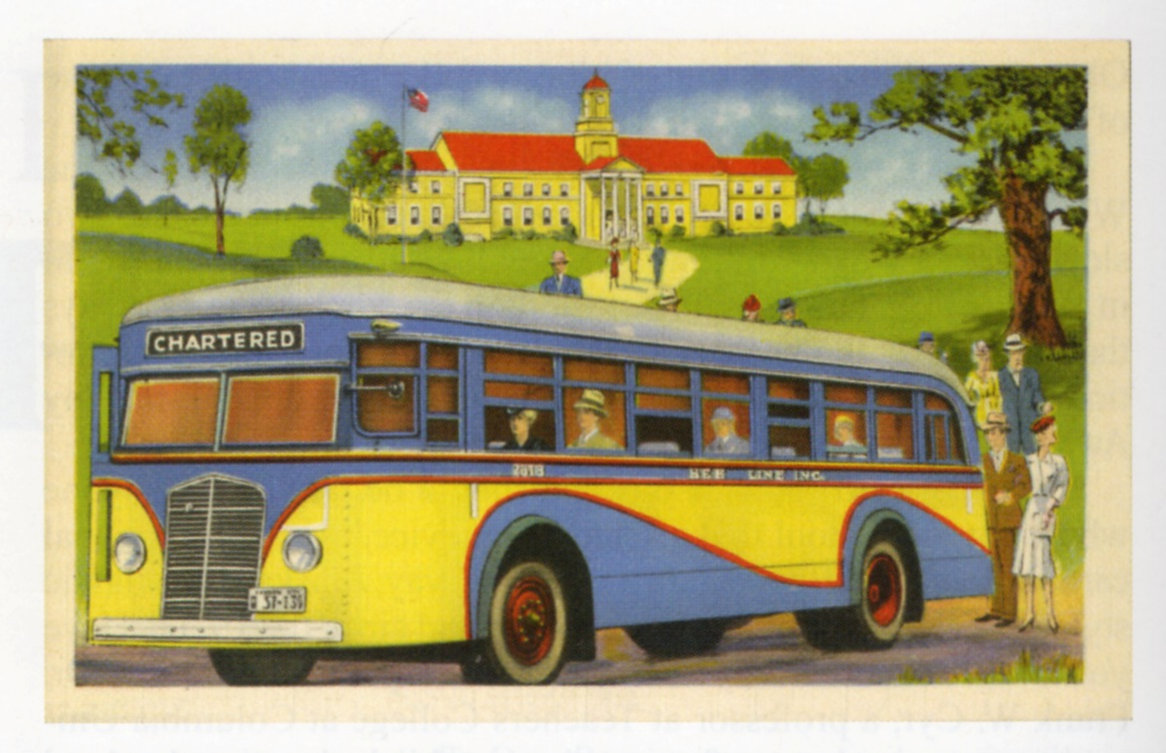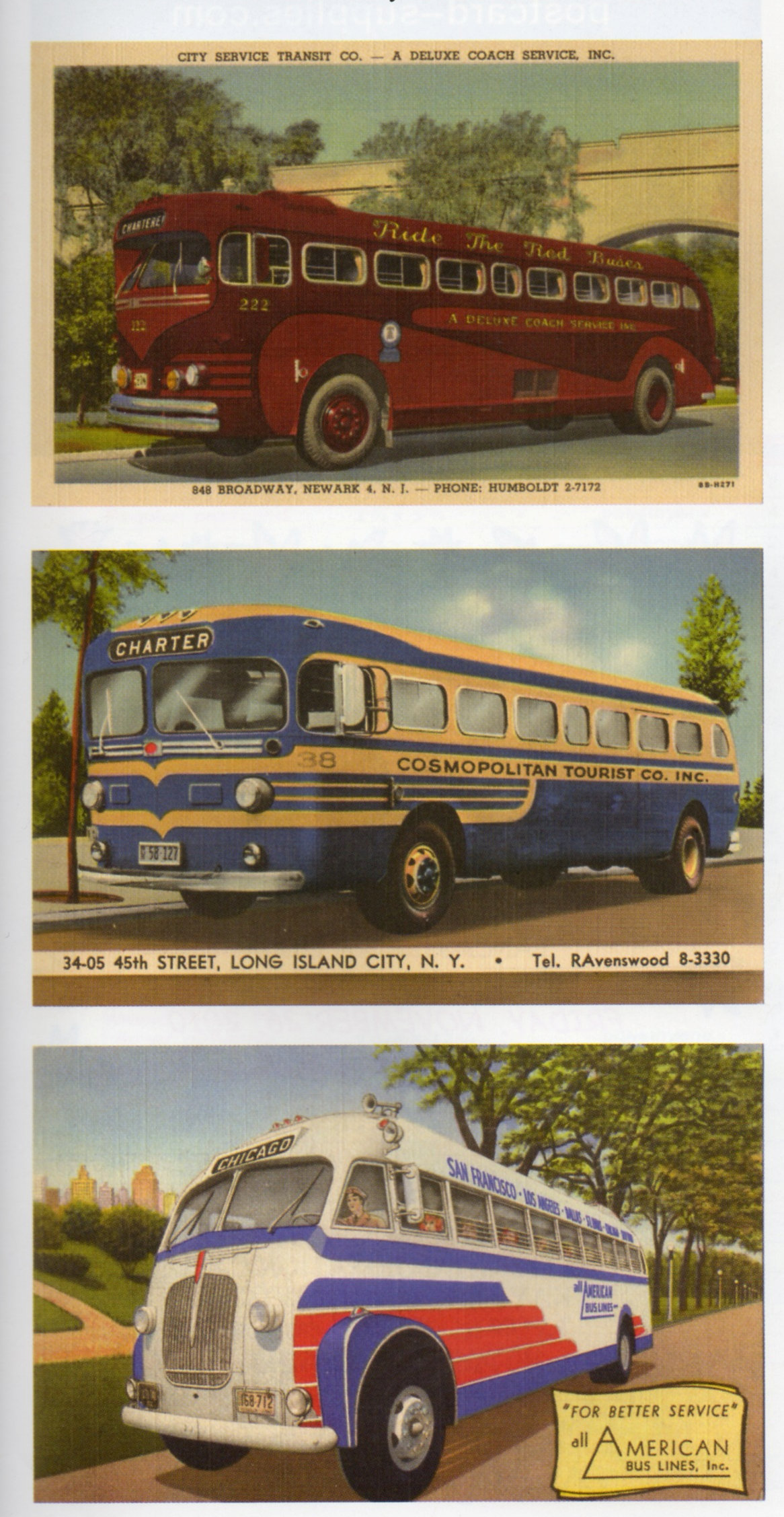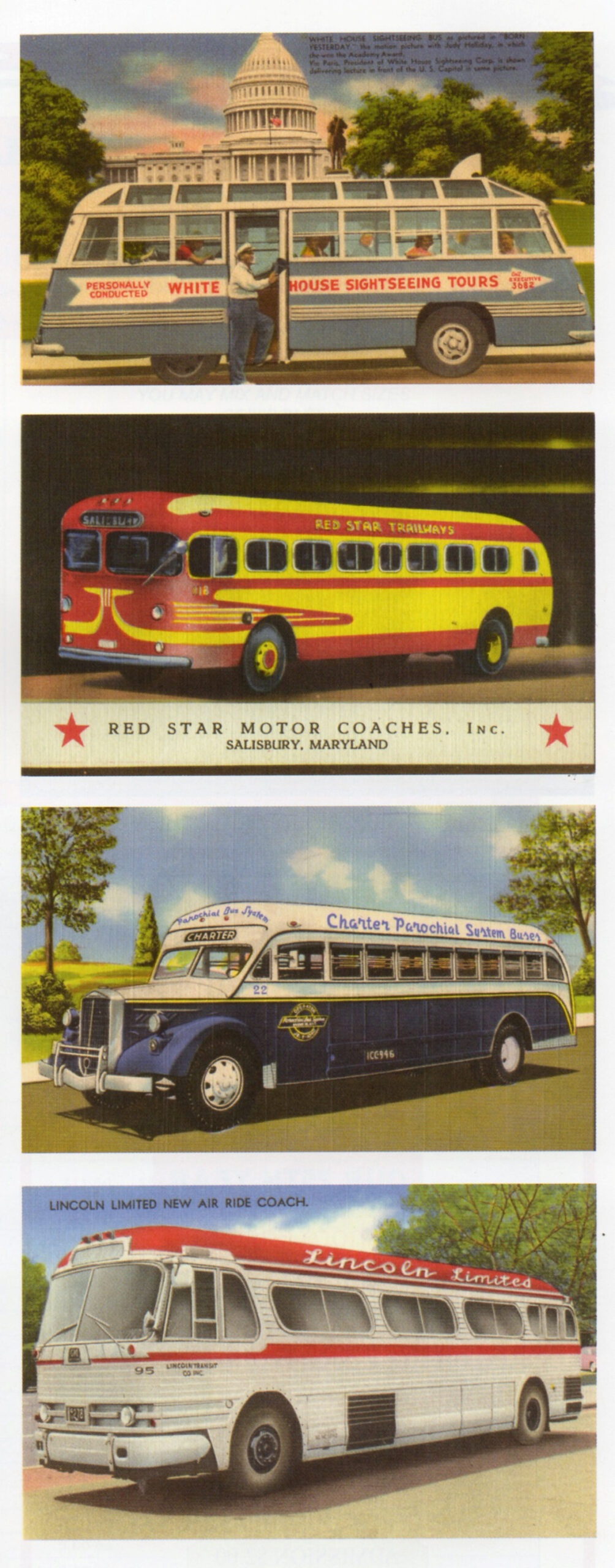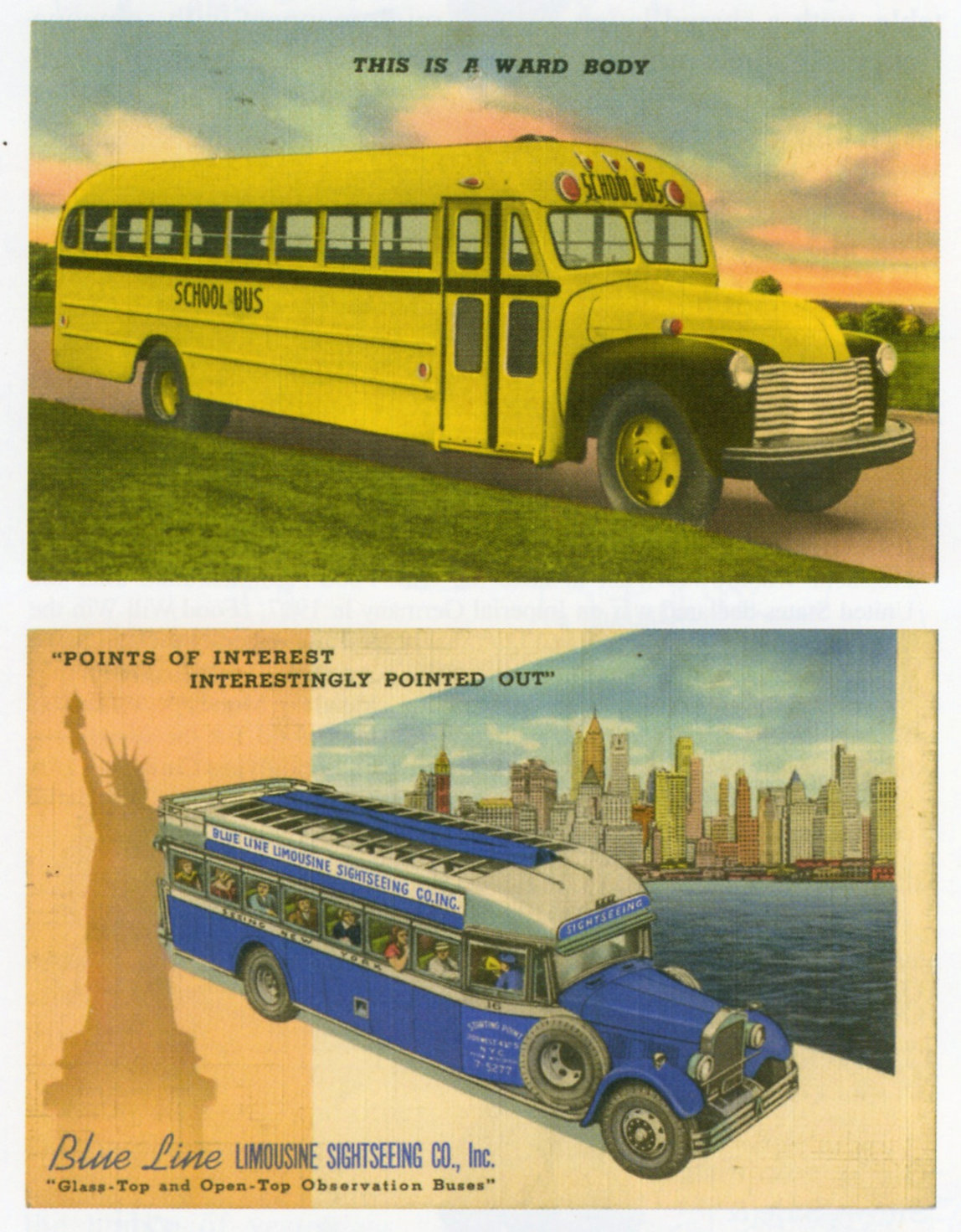TEN TOP LINEN BUSES
One of the pleasures of writing a column about linen postcards in Postcard World magazine is that linen cards are finally able to be shown in high-quality, glorious color. Looking at linen cards reproduced in black and white was like trying to listen to beautiful music with plugs in your ears -- most of the excitement was missing. Thank you, Postcard World!
In the past I have done a number of columns featuring ten top linen postcards in a particular category. These have included trucks, motels, movie theatres, restaurants, and diners. The card selections in all of these are based strictly on my own (and sometimes my wife’s) aesthetic judgment. They are for me examples of spectacular cards in a single category. I can’t necessarily claim they are the very best ten because even after 34 years of postcard collecting I know there are always more great linen treasures that I have never seen or may not yet own.

This time I have chosen great linen buses. A bus, as currently defined by one dictionary, is “a large motor vehicle carrying passengers by road, esp. one serving the public on a fixed route and for a fare.” Buses actually pre-date the motor era and were originally horse-drawn adaptations of stagecoaches and hackney carriages. Internal engine buses first introduced around 1895, have evolved in tandem with the automobile. Trolleybuses, electrically powered buses that were attached to and powered by overhead lines, first appeared in Germany in 1901, and are still in use in some places.
Today there are many styles of buses (single-decker, double-decker, open top, articulated, coach, and a variety of specialized ones, too) that serve many purposes, such as commuting, long distance travel, sightseeing, school transportation, charters, etc. Even retired buses have become mobile cafes and mobile homes. And for buses near their final stop, there are even bus demolition derbies.
Here are ten great linen bus cards representing a variety of purposes with some elaboration about each one.
I’ll start with the Lincoln Limited New Air Ride Coach. This is the newest model of the buses shown here and is reminiscent of the buses of my 1950’s New Jersey childhood. It’s not surprising then to see that Lincoln Limited had “DeLuxe Bus Service between New York, Lakewood, Atlantic City, and Fort Dix, over the New Jersey Turnpike.” The Turnpike was completed in 1952 so that would make this a later linen era card.
The best of the linen bus cards, in my opinion, is the spectacular wide-angled view of the patriotically painted All American Bus Lines headed for Chicago. This was a cross-country bus company billed as “America’s Most Economical Transcontinental Travel Service.”
Another striking paint job is red and yellow combo on the Red Star Motor Coaches Trailways bus based in Salisbury, MD. Red Star claimed it was “The Fastest Growing Bus System in the East.” There is a different, equally wonderful postcard for this company with the bus facing right.
Perhaps the most eye-catching color combo is the blue/yellow and red-striped charter bus of Bee Line, Inc., located in Rockville Centre, NY, with a streamlined wheel well wave accent. “Ultra Modern Equipment” sets “new high standards for luxurious transportation.”


A similar wheel well emphasis is used on the 1948 postcard of the red bus operated by the City Service Transit Co., of Newark, NJ. They offered many amenities including air conditioning, radio, air foam cushion seats, overhead parcel racks, and under-floor baggage compartments. Not to mention a very strange paint job!
New York City is the locale of several great bus cards from three different boroughs. Long Island City, in Queens, was the home of the blue and tan Cosmopolitan Tourist Co., Inc., a chartered bus service.
A different type of charter service is shown on a 1950 postcard depicting the Parochial Bus System, Inc. of the Bronx. Their “Semi-DeLuxe” buses in a blue and white color scheme came in a variety of sizes that had a capacity of 38 to 55 children or 24 to 37 Adults.
Operating out of Manhattan was the Blue Line Limousine Sightseeing Co. Inc., which offered “Open-Top and Glass-Top Observation Buses.” Statue of Liberty collectors should take note of this handsome card.
The ne plus ultra sightseeing linen bus card has to be the White House Sightseeing Tours streamlined bus featuring two sloped facades and windows galore. Of course, they were based in Washington, DC. The tiny caption on the front of the card says that this shows the bus “as pictured in ‘Born Yesterday,’ the motion picture with Judy Holliday, in which she won the Academy Award.” That dates this card to 1950-1951.
The last card shows a bus that should be familiar to anyone who went to a school that offered bus service. It is a promotional card for the Ward Body Company of Conway, Alaska. This classic style of yellow school bus has been around since the 1930’s. Have you ever wondered why school buses are yellow? In 1939, Dr. Frank W. Cyr, a professor at Teachers College at Columbia University organized a conference that established national school bus construction standards. They settled on the standard color of yellow because black lettering on yellow was the easiest to see in the semi-darkness of early morning and late afternoon. It became officially known as “National School Bus Chrome,” later renamed “National School Bus Glossy Yellow,” though usually called simply “school bus yellow.”
There are many other close-up and not so close linen bus cards that are worthy of collecting. I should also mention that there are some great pre-linen bus cards and several scores of bus advertising postcards from just the 1950’s and 1960’s.
Many of us can remember the famous line from a 1950’s Greyhound Bus television commercial, "It's such a comfort to take the bus and leave the driving to us." Looking over great linen bus cards is pretty enjoyable, too.

